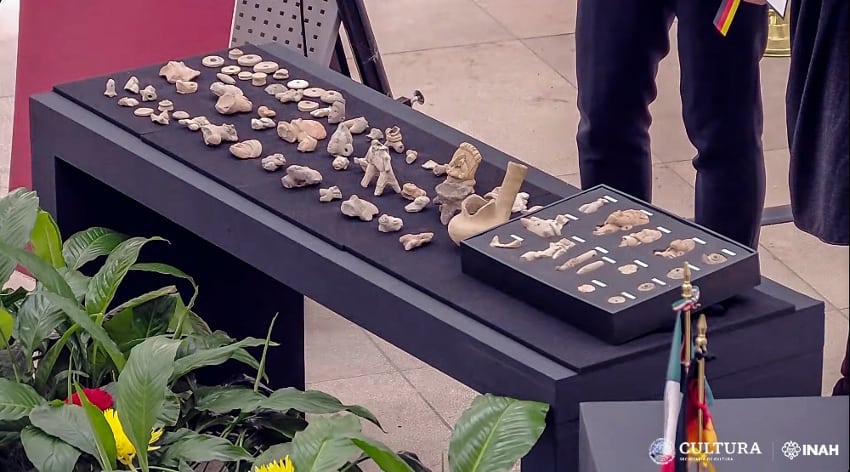A government campaign to repatriate Mexican artifacts continues to yield important results, with the return of 75 Indigenous archaeological artifacts from Germany to Mexico.
Seventy-four of the pieces were voluntarily returned by the Schloss Salder Museum in Salzgitter, in a ceremony held at the Mexican Embassy in Berlin on Nov. 23. They are mostly linked to the Huasteca culture of eastern Mexico and are between 500 and 2,000 years old.

Diego Prieto Hernández, head of the National Institute of Anthropology and History (INAH) explained that these artifacts were found 120 years ago, by a German engineer drilling a well in Tampico, Tamaulipas. They had been held in the Schloss Salder Museum since 1963.
The remaining piece is a tripod stone mortar believed to be around 4,000 years old. The artifact was part of a postal shipment confiscated by customs officers in Leipzig, after the recipient was unable to produce a valid export certificate to prove its lawful ownership.
At the handover ceremony, the Mexican Ambassador to Germany, Francisco Quiroga Fernández, thanked German society for helping to prevent the illegal trade and exhibition of cultural assets.
“Taking these archaeological pieces as souvenirs or decorative items is an affront to the native peoples,” he said. “Their restitution not only guarantees their preservation and study, but also returns a fundamental part of their historical memory to our Indigenous communities.”

The repatriation brings the total number of archaeological artifacts returned to Mexico during President López Obrador’s administration up to 13,422. Much of this has been driven by the #MiPatriaNoSeVende campaign, launched in 2018 to promote the recovery and return of Mexico’s historical assets.
In August, a citizen in Belgium voluntarily returned 20 archaeological pieces to Mexico, saying that the #MiPatriaNoSeVende campaign had made her realize that the objects, which had been in her family for more than 70 years, actually belonged to Mexico.
In October, the School of Advanced Research in Santa Fe, New Mexico, returned another 60 artifacts, originally donated by a private collector. In May, Mexico achieved the repatriation of Chalcatzingo’s Monument 9, also known as the “Portal of the Underworld,” – a huge, 2,500-year-old Olmec monument that for decades had been a priority in the recovery of Mexico’s historical heritage.
Mexico News Daily
